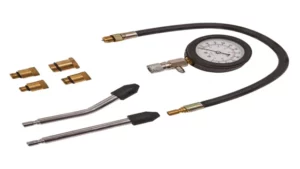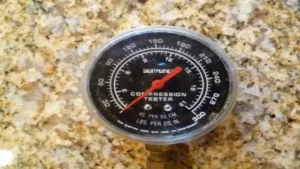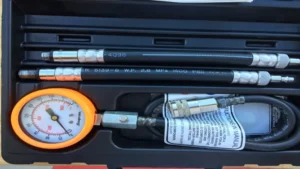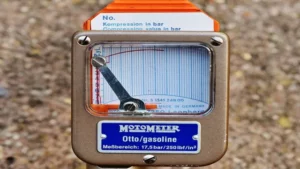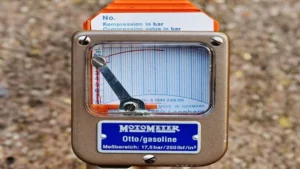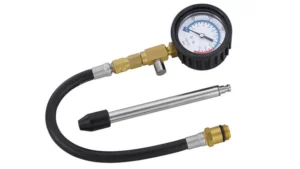If you’re a diesel engine owner, then it’s essential to know how to diagnose and solve any issues with your engine’s compression. A diesel compression tester can help you determine where these issues lie, but how do you use one properly? In this step-by-step guide, we’ll walk you through the process of using a diesel compression tester, so you can ensure your engine is working efficiently and effectively. With our easy-to-follow instructions and tips, you’ll be able to diagnose and fix any issues with your diesel engine’s compression like a pro.
So buckle up, and let’s dive right in!
What is a Diesel Compression Tester?
Using a diesel compression tester is essential for ensuring the proper function of a diesel engine. This tool measures the amount of pressure within the engine’s combustion chamber during the compression stroke. By doing so, it can indicate if there are any leaks or malfunctions that may be affecting the engine’s performance and fuel efficiency.
To use a diesel compression tester, you need to first locate the engine’s glow plug and remove it. Then, connect the compression tester to the engine’s cylinder and crank the engine over for a few revolutions. The pressure gauge on the tester will then show the pressure within the cylinder during the compression stroke.
By comparing the readings to the manufacturer’s specifications, you can determine whether any repairs or maintenance are needed to keep your diesel engine running smoothly. Overall, using a diesel compression tester is a straightforward process that can save you time and money in the long run.
Definition and Purpose
A diesel compression tester is a tool used to measure the compression in a diesel engine’s cylinders. It is a handy tool used by mechanics and technicians to diagnose engine problems such as cylinder misfires, low compression, or burned valves. By measuring the amount of pressure in each cylinder, the tester provides valuable insights into the health of the engine and helps prevent catastrophic problems down the road.
The purpose of the diesel compression tester is to ensure that the engine’s combustion chambers are working efficiently, which leads to better fuel economy, better performance, and longer engine life. Overall, a diesel compression tester is an essential tool for anyone working on a diesel engine, whether it’s a professional mechanic or a weekend DIY enthusiast.
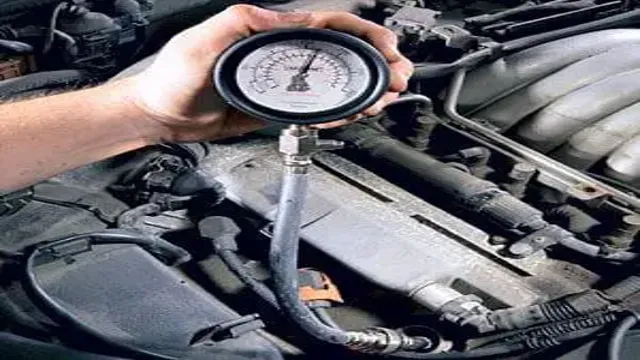
Types of Diesel Compression Testers
A diesel compression tester is an essential tool used to measure the pressure of diesel engines. This tool is commonly used by mechanics to inspect the overall health of the engine and detect any potential problems that might arise in the future. There are two main types of diesel compression testers: manual and electronic.
Manual testers are the traditional choice and require a bit of mechanical know-how to operate. They come equipped with a gauge, hose, and adapter and need to be manually pumped to get a reading. However, electronic testers have started to overtake manual ones because they are easier to use and provide more accurate readings.
These testers require a battery to function and have a digital display that shows the pressure reading after attaching the hose and adapter. Ultimately, the type of diesel compression tester you choose will depend on your personal preference and the specific needs of your diesel engine.
How to Use a Diesel Compression Tester
If you’re looking to diagnose any issues your diesel engine may be having, a diesel compression tester can be a handy tool to have. But if you’re not experienced, you may wonder how to use a diesel compression tester. First, remove all the glow plugs and injectors from the engine.
Then, attach the compression tester to the first cylinder and crank the engine over using the starter motor. The gauge on the tester will give you a reading of the compression pressure. Repeat this process for each cylinder.
Compare the results to the manufacturer’s specifications to determine if any cylinders are not up to par. Remember, using a diesel compression tester requires technical knowledge and expertise, so don’t hesitate to seek professional guidance if you need it.
Step One: Prepare Your Tools and Equipment
If you’re looking to test the compression of your diesel engine, the first thing you need to do is prepare your tools and equipment. You’ll need a diesel compression tester, which typically consists of a gauge and a hose with an adapter that fits into the glow plug or injector port of your engine. Make sure you have the correct adapter for your engine before you start.
You’ll also need a wrench to remove the glow plug or injector, as well as a battery charger to ensure your engine has enough power to turn over during the testing process. Once you have all of your tools and equipment, it’s time to move on to the next step in the process.
Step Two: Locate the Glow Plugs or Injector Lines
Once you have identified the cylinder that you need to test, the next step in using a diesel compression tester is to locate the glow plugs or injector lines. This will vary depending on your particular engine, so it’s essential to refer to your engine manual for guidance. Generally, you’ll find glow plugs or injector lines near the top of the cylinder head, usually with a nut or bolt on top.
Your compression tester kit will include an adapter that will thread onto the glow plug or injector line to provide a seal for testing purposes. Before you begin the test, make sure your engine is at operating temperature and that the battery is fully charged since a low battery can affect your readings. With your compression tester connected to the glow plug or injector line, crank the engine for several rotations and observe the readings on your gauge.
If your readings are below what is recommended for your engine, it may be time to consider servicing your diesel engine before any further damage occurs.
Step Three: Remove the Glow Plugs or Injector Lines
To use a diesel compression tester, you need to remove the glow plugs or injector lines. This step is critical because it allows the tester to get an accurate reading of the engine’s compression. If the glow plugs or the injector lines are left in place, the pressure will not be able to escape, hence the tester won’t be able to measure the actual pressure.
Removing the glow plugs or injector lines may seem like a daunting task, but it is relatively easy to do. First, locate the glow plugs or injector lines, which should be easily accessible. Use an appropriate socket or wrench to unscrew and remove them from the engine.
Be careful not to damage the threads during the process. Once the glow plugs or injector lines are removed, you need to insert the diesel compression tester into the cylinder one by one. Turn the engine over, and the tester will measure the pressure buildup.
Repeat the process for all cylinders, and note the readings. Using a diesel compression tester is an excellent way to diagnose engine problems, and it’s relatively simple to operate. By removing the glow plugs or injector lines, you’ll get accurate readings, which will help diagnose any issues with your diesel engine.
So, take the time to carefully follow these steps and get accurate compression readings.
Step Four: Insert the Compression Tester
Inserting the compression tester in your diesel engine is a crucial step in diagnosing any issues with your vehicle. Before inserting the tester, ensure that your engine is turned off and cool to avoid any accidents. Remove the glow plugs to allow the tester to fit easily and create the necessary seal.
Screw the tester securely into place, making sure it’s tight and doesn’t move around. Once you’ve done this, you can connect your tester to a power source and start the engine. The gauge on your tester will show you the compression levels in each cylinder, indicating whether there are any problems with your engine.
By carefully interpreting the readings, you can determine what’s wrong and proceed with the appropriate repairs. Overall, using a diesel compression tester is an essential part of maintaining your vehicle’s health and ensuring optimal performance.
Step Five: Crank the Engine
Congratulations! You’ve made it to the final step of using a diesel compression tester: cranking the engine. But before we do that, let’s make sure everything is set up correctly. First, double-check that the compression tester is securely attached to the engine’s cylinder.
Next, ensure that the engine is at operating temperature, as this will give you the most accurate readings. Now it’s time to start cranking the engine. Make sure the throttle is open and crank the engine for about five to six times.
This will give you a good reading of the engine’s compression. Remember to watch the gauge on the compression tester while you’re cranking. If the gauge fluctuates or doesn’t rise as high as it should, you may have a problem with your engine’s compression.
Congratulations, you’ve successfully used a diesel compression tester! Keep in mind that you’ll want to perform this test regularly to keep your engine running smoothly.
Step Six: Record the Results
After performing the compression test with the diesel compression tester, it is time to record the results. The compression readings need to be compared with the manufacturer’s specifications to determine if the engine’s compression is within the correct range. The results can also help diagnose any potential engine problems, such as a worn piston or valve.
Make sure to note down each compression reading for each cylinder and compare them with the recommended values. If any values are outside the range, it may indicate an issue that needs to be addressed. By recording the results accurately, you can easily keep track of the engine’s health and know when it is time for a tune-up or repair.
Remember to keep the diesel compression tester in good condition and check the user manual for specific instructions for use. A well-maintained tester will provide accurate and reliable results.
Interpreting the Results
Using a diesel compression tester can be a straightforward process, but interpreting the results can be a bit more complex. After conducting the test, you will have a reading of the compression pressure for each cylinder in your engine. You may notice that some cylinders have significantly lower pressure than others, indicating possible issues such as worn piston rings or valves.
Low pressure can also be caused by a faulty injectors or fuel pump. It’s important to compare the readings to the manufacturer’s specifications for your engine to determine which cylinders are problematic. If you’re unsure how to interpret the results, don’t hesitate to seek the advice of a mechanic.
Understanding the results can help to identify any underlying issues and prevent further engine damage, ultimately saving you time and money down the road.
What Should the Compression Reading Be?
When it comes to interpreting compression readings, there are a few key factors that need to be considered. The first is the make and model of the engine being tested, as different engines will have different compression readings that are considered acceptable. Generally speaking, the compression reading should fall somewhere between 140 and 160 PSI, although this can vary depending on the engine.
It’s also important to remember that a compression reading is just one part of a larger diagnostic process, and should not be relied on solely to diagnose engine issues. There are a number of different factors that can impact compression readings, including worn out or damaged piston rings, faulty valves, or even a blown head gasket. If you’re not sure what your compression reading means, it’s always best to consult with a professional mechanic who can help diagnose any issues and recommend the best course of action to take.
What to Do if the Reading is Low
When it comes to interpreting low readings, there are a few steps you can take to ensure accuracy and peace of mind. Firstly, make sure that the device is functioning correctly and has fresh batteries. If the device is working properly, the next step is to check the instructions to ensure that you are using it correctly.
In some cases, it may be necessary to recalibrate the device to make sure that it is providing accurate readings. It’s also important to keep in mind that external factors such as recent meals, exercise, and stress levels can all affect blood pressure readings. If you consistently see low readings, it’s important to talk to a healthcare professional to rule out any underlying health issues.
Remember, in the case of low blood pressure readings, it’s always better to be safe than sorry.
Tips for Using a Diesel Compression Tester
If you’re looking to check the health of your diesel engine, a compression test is a necessary step. To perform this test, you’ll need a diesel compression tester. Here are some tips to help you use one effectively.
First, make sure your engine is fully warmed up before testing. This will ensure accurate readings. Next, remove the glow plugs and disable the fuel system to prevent ignition during the test.
Screw the compression tester into the cylinder where you removed the glow plug and crank the engine. Take note of the reading on the tester gauge and repeat the process for each cylinder. Be sure to follow the manufacturer’s instructions for your specific tester, and don’t forget to compare your readings to the recommended compression levels for your engine.
By following these steps, you can get accurate readings and gain a better understanding of the health of your diesel engine.
Safety Precautions
Diesel Compression Tester When it comes to using a diesel compression tester, safety should always be your top priority. First, ensure that you are using the tester on a level surface and that the engine is turned off. Next, make sure to follow the manufacturer’s instructions carefully and wear appropriate safety gear, such as work gloves and eye protection.
Keep in mind that the tester is designed to measure the pressure inside the cylinders, so it’s important to relieve any residual pressure before installing or removing the tester. Additionally, never attempt to use the tester on a hot engine or in a confined space without proper ventilation. By following these simple safety precautions, you can ensure a successful and safe experience with your diesel compression tester.
Maintenance and Storage Tips
If you own a diesel vehicle, it’s important to regularly maintain and test its compression to ensure it’s running smoothly. A diesel compression tester is a handy tool that can help you diagnose any issues with your engine. However, it’s important to follow a few tips to ensure you’re using it correctly.
First, make sure you read the instructions carefully before use. It’s also vital to properly store the tester in a dry, cool place when not in use to prevent damage. Additionally, you should always clean and oil the tester after each use to prevent rust and keep it functioning properly.
By following these simple maintenance and storage tips, your diesel compression tester will continue to be a reliable tool for diagnosing any issues with your vehicle’s engine.
Conclusion
In conclusion, using a diesel compression tester may seem intimidating at first, but like any tool, it can be easily mastered with a little bit of practice. Think of it like a stethoscope for your engine, allowing you to listen to its heartbeat and diagnose any potential issues. Just remember to follow the manufacturer’s instructions, properly clamp the tester onto your engine, and give it a good crank.
And who knows, with a diesel compression tester in hand, you may just become the ultimate car whisperer. Happy testing!”
FAQs
What is a diesel compression tester used for?
A diesel compression tester is used to measure the compression pressure in a diesel engine’s cylinders.
How do you use a diesel compression tester?
To use a diesel compression tester, you need to remove the glow plugs or injectors, insert the tester into the cylinder, and crank the engine. The tester will measure the pressure and display the reading.
What pressure should a diesel engine have during compression testing?
The compression pressure in a diesel engine should be around 400-600 PSI (pounds per square inch) for each cylinder.
Can a diesel compression tester be used on gasoline engines?
No, a diesel compression tester is designed specifically for diesel engines and cannot be used on gasoline engines.
What are the common causes of low compression in a diesel engine?
Low compression in a diesel engine can be caused by worn piston rings, damaged head gasket, leaking valves, or a faulty injector.
How often should you perform a compression test on a diesel engine?
It is recommended to perform a compression test on a diesel engine every 100,000 miles or when you notice a loss of power or rough running.
Can a diesel compression tester diagnose other engine problems?
No, a diesel compression tester can only diagnose low compression in the cylinders. Other engine problems will require different diagnostic tools and techniques.

